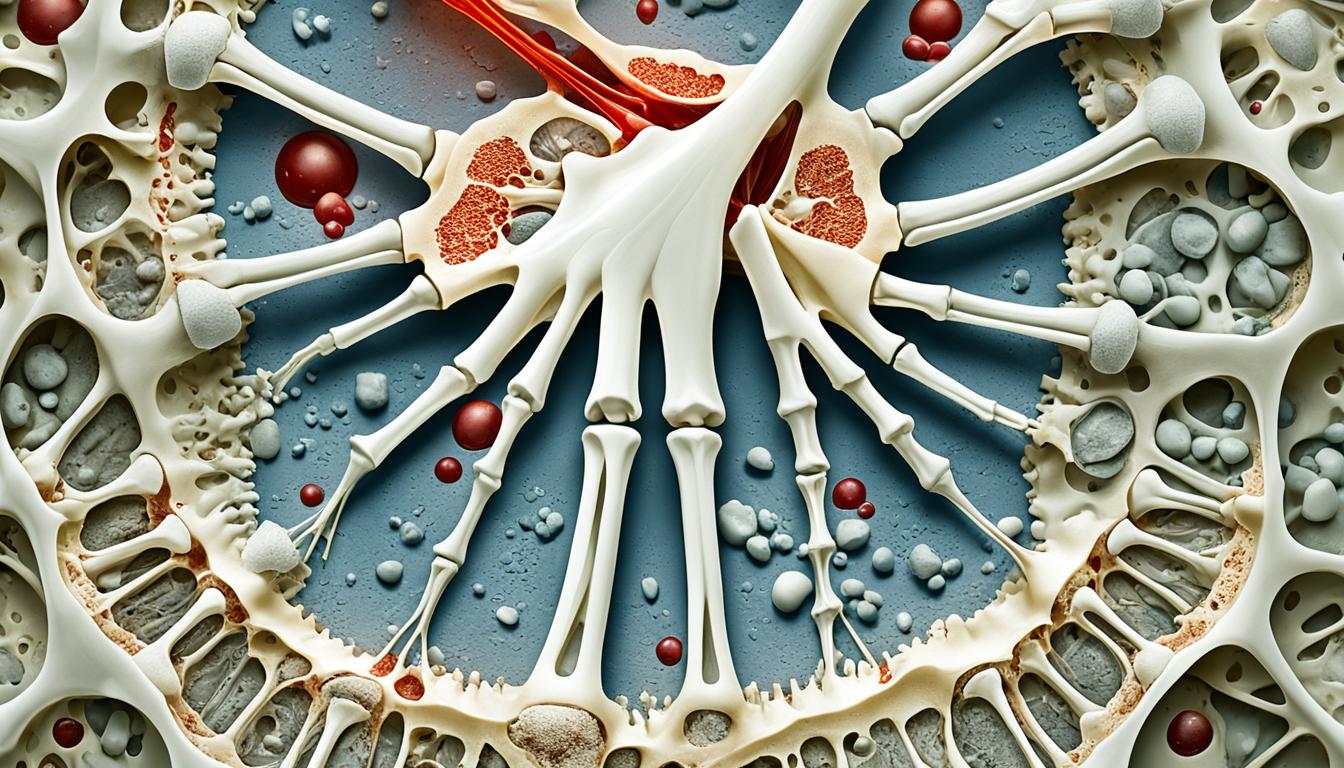A fracture is a break or crack in a bone, often very painful. High force from impacts or too much stress usually causes it. Fractures can happen in any bone and take many forms like closed or compound.
Fractures show up in symptoms like pain, swelling, or bruising. Moving the body part or using it might become hard. And sometimes, you might hear a grating sound from the bones.
There are many reasons fractures occur. They can happen from falls, sports injuries, or overuse. Health issues like osteoporosis can make bones weaker, raising the risk of fractures. And this risk goes up as we get older.
Doctors diagnose fractures with physical exams and imaging like X-rays. These tests show what type of fracture it is and how bad. This information helps plan the best treatment.
Fixing a fracture aims to join broken bones correctly and provide healing support. Treatments include casts, braces, or sometimes surgery. How long it takes to heal depends on the fracture’s type and where it is.
Fractures might lead to other problems, like trouble healing or infections. These issues sometimes need extra treatments such as stem cell therapy or bone grafts.
Key Takeaways:
- Fractures are breaks in bones from strong impacts or too much stress.
- They can affect any bone and have different types.
- Symptoms include pain, swelling, and difficulty in moving the affected area.
- Many things can cause fractures, like falls or health conditions.
- Treating fractures includes aligning bones and supporting healing in different ways.
- There can be complications, which might need treatments like stem cell therapy.
Growth Plate Fractures: Types, Causes, and Treatment
Growth plates are found at the ends of children’s long bones. They are made of cartilage and help bones grow longer and take their shape. This process is critical during a child’s growing years.
Children and teens often get growth plate fractures, especially if they play sports. These injuries happen when the growth plate is damaged. Sometimes, this damage leads to different kinds of fractures.
Types of Growth Plate Fractures
There are five main types of growth plate fractures:
- Type I: Fracture through the growth plate
- Type II: Fracture through the growth plate and metaphysis (the wider part of the bone)
- Type III: Fracture through the growth plate and epiphysis (the rounded end of the bone)
- Type IV: Fracture through the growth plate, metaphysis, and epiphysis
- Type V: Compression fracture through the growth plate
The exact type of fracture depends on where and how the growth plate is damaged.
Causes of Growth Plate Injuries
Growth plate injuries can result from several things:
- Accidental falls
- Blows to the limbs
- Overuse of tendons
- Bone disorders
- Child abuse or neglect
- Exposure to intense cold
- Chemotherapy
- Nervous system disorders
- Genetic disorders
- Metabolic diseases
Every cause listed above can increase a child’s chances of a growth plate injury.
Treatment of Growth Plate Fractures
Treating these fractures depends on how bad and where they are. There are a few standard options:
- Using casts or splints to keep the area stable
- Performing surgery to correctly align the bones
- Helping with physical therapy to improve movement
Monitoring the child’s growth and any complications after the injury is vital. It helps to ensure they heal fully.
| Type of Growth Plate Fracture | Description |
|---|---|
| Type I | Fracture through the growth plate |
| Type II | Fracture through the growth plate and metaphysis |
| Type III | Fracture through the growth plate and epiphysis |
| Type IV | Fracture through the growth plate, metaphysis, and epiphysis |
| Type V | Compression fracture through the growth plate |
Conclusion
Growth plate disease is common among kids and teens, often from sports injuries. It’s crucial to diagnose these fractures accurately. This helps determine the right treatment, whether it’s rest, surgery, or therapy.
Using stem cells to treat some fractures is showing good results. But healing can be slow, anywhere from several weeks to months. Complications like bad bone healing or infections are risks.
To lower the chance of growth plate disease, it’s important to stay healthy. This means eating well, exercising, and being careful in sports. Regular check-ups are crucial to manage any issues that might come up.

